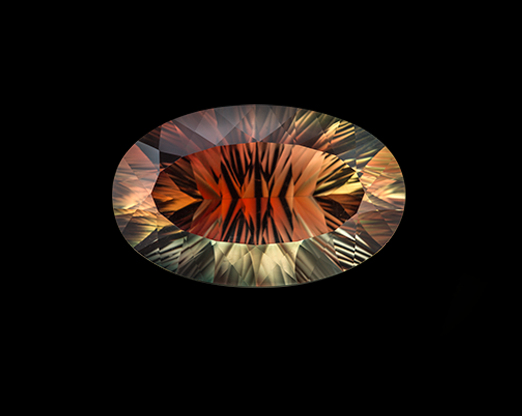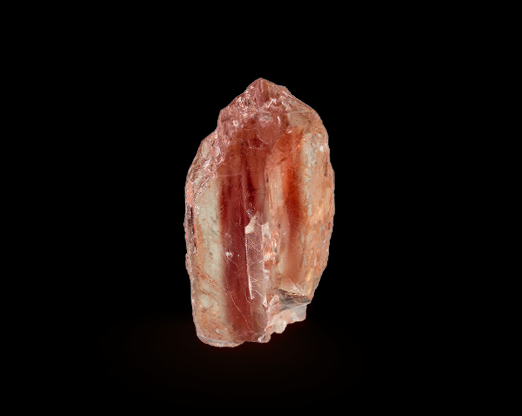Sunstone |
|
|
Gem connoisseurs and innovative jewelry designers often seek the subtle beauty of lesser-known—but still intriguing and unique—gemstones. Some of those are members of the feldspar group.
The feldspar group’s wide variety of unusual gems includes moonstone, non-phenomenal orthoclase, phenomenal and non-phenomenal labradorite, sunstone, and amazonite. Of these feldspars, moonstone is a constant favorite, while sunstone from Oregon is gaining attention as a natural and untreated product of the United States. Although sunstone and moonstone are both members of the feldspar group, the resemblance stops there. While cool moonstone’s phenomenal varieties offer a soft and gentle adularescent glow, warm sunstone’s phenomenal varieties show a distinct and lively glitter called aventurescence. Aventurescence is a sparkly, metallic-looking luster caused by flat, reflective inclusions, sometimes called “schiller” by sunstone fanciers. There are many sunstone varieties. If aventurescence is present, gemologists call it aventurine feldspar. The aventurine feldspar from India has a red-brown bodycolor and sunny glitter. It’s perhaps the best-known sunstone variety, but that situation has been changing. Although most sunstones have yellow, orange, or brown bodycolor, not all sunstones are aventurescent. The appearance of the phenomenon depends upon the size of the inclusions. Small inclusions create a reddish or golden sheen on top of any bodycolor. Larger inclusions create attractive, glittery reflections. Sunstone inclusions can be hematite, copper, or some other mineral. MOHS HARDNESS: 6.0 – 7.2 |

|

